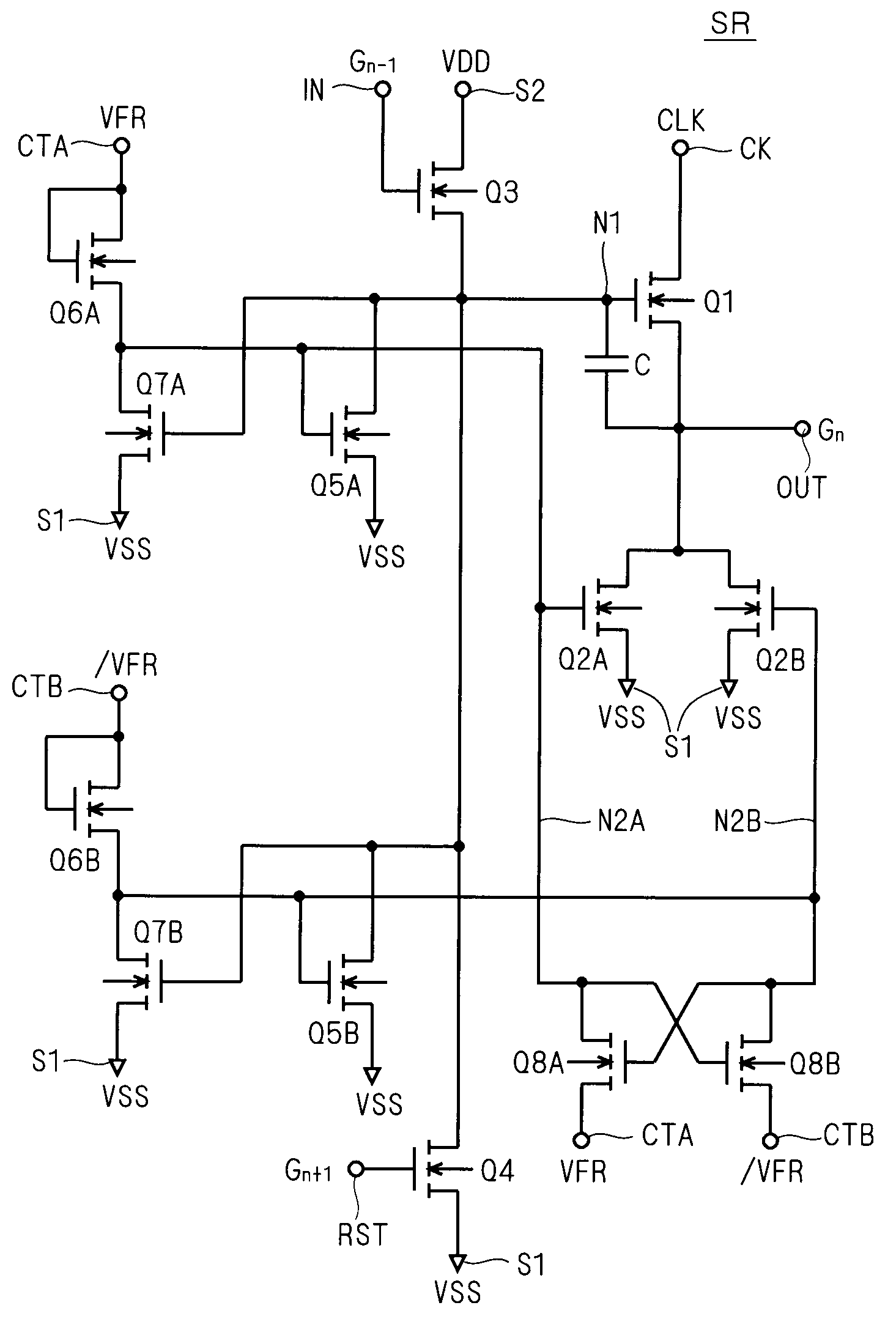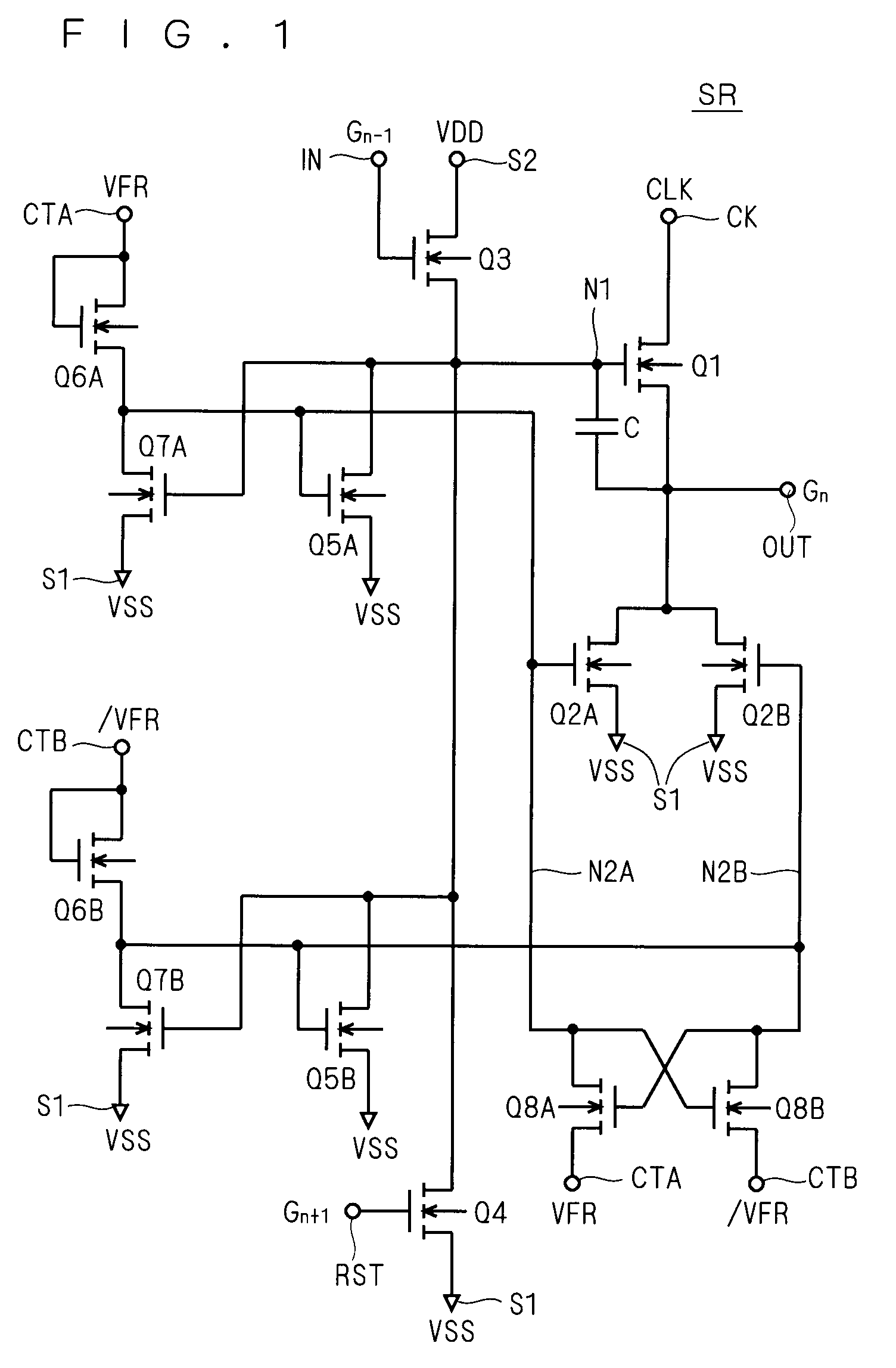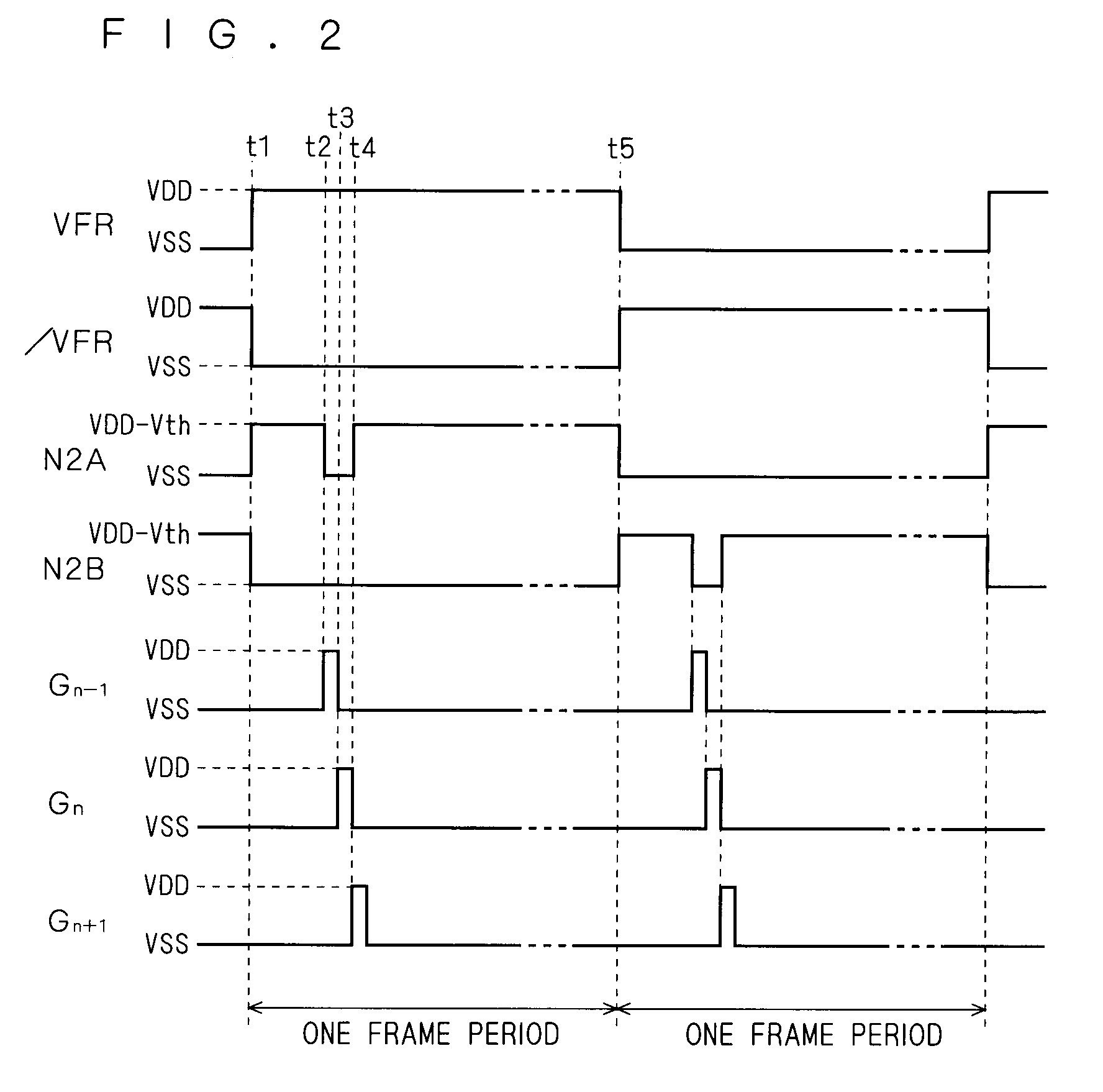Shift register, image display apparatus containing the same and signal generation circuit
a technology of image display apparatus and shift register, applied in the direction of digital storage, pulse automatic control, instruments, etc., can solve the problems of decrement of driving capability, increase of on-state resistance, and degrade of driving capability, so as to improve the shift register
- Summary
- Abstract
- Description
- Claims
- Application Information
AI Technical Summary
Benefits of technology
Problems solved by technology
Method used
Image
Examples
first preferred embodiment
[0047]FIG. 1 is a circuit diagram illustrating the configuration of a unit shift register SR according to a first preferred embodiment of the present invention. The unit shift register SR includes two output pull-down transistors, and alternately activates and deactivates these transistors, to thereby minimize the threshold voltage shift of the output pull-down transistors.
[0048]Transistors constituting the unit shift register SR are all field effect transistors of the same conductivity type, and are all assumed to be N-type TFTs herein. The N-type TFT is in the active (on) state when the gate is at the H level with respect to the source, and in the non-active (off) state at the L level. The unit shift register SR may be formed of P-type transistors. The P-type transistor is in the active (on) state when the gate is at the L level with respect to the source, and in the non-active (off) state at the H level.
[0049]In the following description, it is assumed that a plurality of unit sh...
second preferred embodiment
[0101]As described above, the problem of the error signal occurring just after the change in level of the first and second control signals VFR and / VFR results from the low rate of change in level of the nodes N2A and N2B. A second preferred embodiment will therefore present a unit shift register SR in which the nodes N2A and N2B change in level at high speeds just after the change in level of the first and second control signals VFR and / VFR.
[0102]FIG. 6 is a circuit diagram illustrating the configuration of a unit shift register SR according to the second preferred embodiment. The unit shift register SR includes transistors Q13A and Q13B added to the first and second inverters, respectively, in the circuit shown in FIG. 1.
[0103]The transistor Q13A added to the first inverter is connected between the first control terminal CTA supplied with the first control signal VFR and node N2A serving as the output node of the second inverter. The transistor Q13B added to the second inverter i...
third preferred embodiment
[0113]FIG. 8 is a circuit diagram illustrating the configuration of a unit shift register SR according to a third preferred embodiment. The circuit configuration of the unit shift register SR is similar to that of the second preferred embodiment (FIG. 6); in the present embodiment, however, the second reset terminal RST2 receives a start pulse STY as the reset signal NBR. The start pulse STY is a pulse signal corresponding to the head of each frame period of an image signal (i.e., the end of the blanking period), and input to the input terminal IN of the unit shift register SR1 of the forwardmost shift register (of the first stage) as described earlier.
[0114]The start pulse STY corresponds to the head of each frame period, and thus reaches the H level at the end of the blanking period. Therefore, setting the first and second control signals VFR and / VFR to change in level (at time t1, t5) just before the start pulse STY rises to the H level (at time t1S, t5S) as shown in FIG. 9 allo...
PUM
 Login to View More
Login to View More Abstract
Description
Claims
Application Information
 Login to View More
Login to View More - R&D
- Intellectual Property
- Life Sciences
- Materials
- Tech Scout
- Unparalleled Data Quality
- Higher Quality Content
- 60% Fewer Hallucinations
Browse by: Latest US Patents, China's latest patents, Technical Efficacy Thesaurus, Application Domain, Technology Topic, Popular Technical Reports.
© 2025 PatSnap. All rights reserved.Legal|Privacy policy|Modern Slavery Act Transparency Statement|Sitemap|About US| Contact US: help@patsnap.com



